There has been a lot of work done by the community in the past to nominate Bruny Island as a UN Biosphere Reserve also, given all its relative qualities compared to so much of the mainland of Tasmania.
The area is relatively... I don't want to say undisturbed, but it has fewer threats on the beaches from a shorebird perspective, compared to many other parts of Tasmania. That's simply because many of the beaches are inside National Parks and/or you can only walk to them, so you can't drive your 4WD onto the beach.
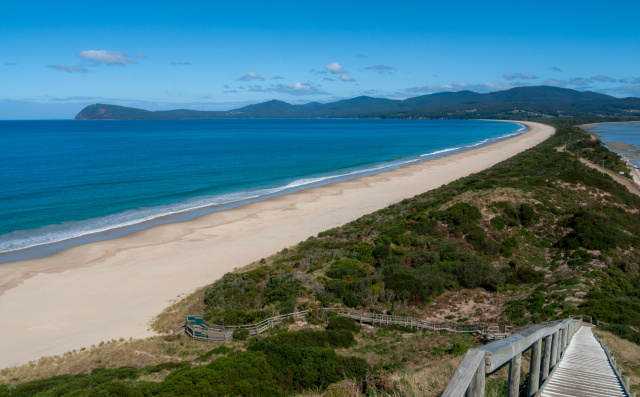
Bruny Island also has large populations of little penguins on many of the beaches. Here at The Neck, there are colonies of little penguins and short-tailed shearwaters that I think most people are familiar with.
There are many other beaches around Bruny Island and Tasmania that support little penguins as well. You have such a mixture of vegetation communities, vegetation habitats and the diversity of landforms, that allow for a high diversity of birds.
It's just one of these magic little treasure islands, where you have intact habitat and the birds reflect the intact nature of the environment here.
Little penguins are only found in Australia and New Zealand, and we believe from the work that has been done over the last 30-40 years, that Tasmania is probably the stronghold for the little penguin as well.
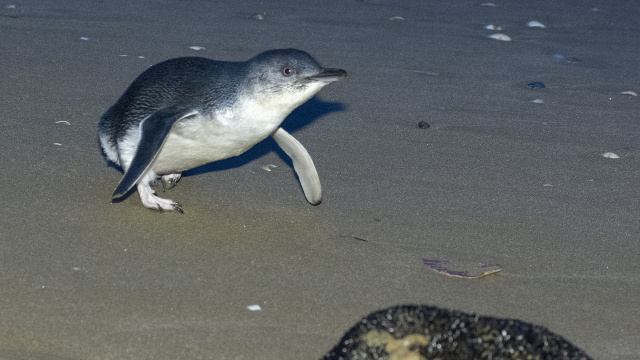
We know they're as far north up the east coast as Sydney. They're certainly in Sydney Harbour and Manly. We have penguins there and they're on the offshore islands in New South Wales.
I think most people would be familiar with the Phillip Island penguin colony. It's deemed as a super-colony. I think they're up to more than 40,000 pairs of penguins nesting on Phillip Island. They go around the corner into South Australia and even into Western Australia, as far north as Perth.
So they're very much along the southern coastline of the Australian continent and all around Tasmania.
They are the world's smallest penguin. They're only about 30 centimetres tall. It's easy for people to disturb the penguins and lose them, but if the penguins choose to nest in your garden or under your shed, that's a particular privilege.
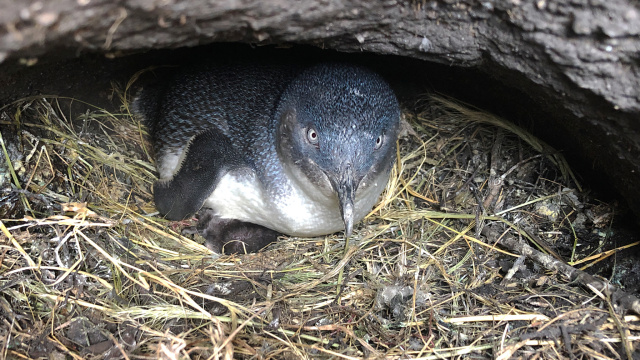
There are people working on penguin surveys up on the north-west coast and we're starting to discover big colonies that we didn't know about before. Or we knew there was a colony, but we didn't have a true sense of the scale of that particular colony or population.
They will nest in a range of habitat. Things like tussock grass, they'll nest under that. They'll nest under coastal wattle, they'll find safe spots inside rocky sea walls, things like that. So they are a generalist and often they will tolerate human occupation.
There are plenty of places where people have penguins nesting under their boat shed, or their dinghy hasn't been turned over for 12 months and when they do they find themselves looking at a pair of penguins who have decided to nest under their overturned dinghy.
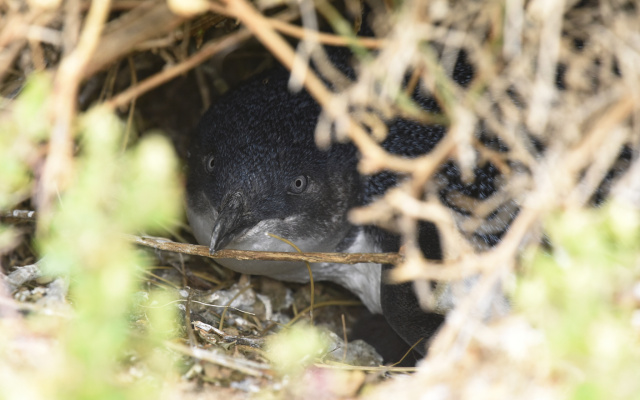
They're certainly here on Bruny Island. There's lots of penguins here, but probably the biggest populations are on the Bass Strait Islands and the north-west coast (of Tasmania).
We now know with climate change, with the world's oceans getting warmer, the changes in food distribution and abundance that we're now seeing pretty much breeding almost any time of the year here in Tasmania.
So we have the foundations for a sense of where the penguins are found around Tasmania. We have a sense of the type of habitat they prefer, but they can still continue to surprise us as well in terms of where we find them.
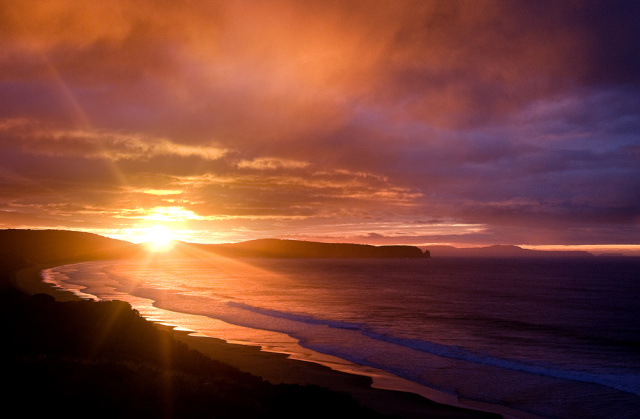
The penguins come ashore of an evening about 45 minutes or so after sunset and depending on the breeding season, they could either have eggs or chicks, or a partner or not in the nest.
When I started working on penguins back in the late 1970s the paradigm was that you would have Spring arrival back to the colonies, breeding during the Summer months, a moult during the Autumn and then they would go to sea for the Winter.
So the only thing that's still fixed is their moult. They have to change their feathers once a year, and that's typically some time around the first week of January now. Summer time, rather than autumn through to April.
So the moult still has to happen, but after that we've had Autumn breeding, we've had Winter breeding, we've had Spring breeding, we've had Summer breeding. The birds are giving us a signal that the marine system is changing - at the moment, it suits them.
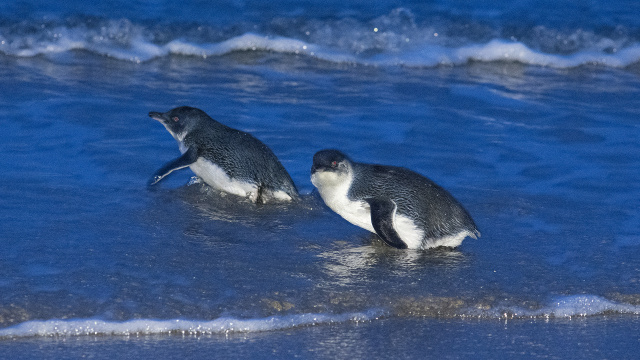
But at some point in time, the water temperatures will get too warm and they won't be able to find enough food. At the moment, things are getting better for the penguins. But in time it will cross the threshold and then it will be not such good news.
I wouldn't be here if I didn't believe in the power of education and power of engagement. I think one of the sad things for many people these days is that they've lost their connection with nature.
They spend too much time in front of screens. When kids go out to play, parents say don't touch that, don't get dirty. That's if they go out to play at all. And so for most people their exposure to wildlife is something like a David Attenborough series on TV, rather than actually having the opportunity or having the interest to go out and explore.
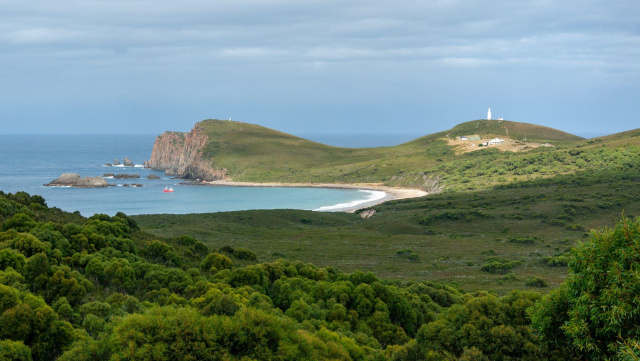
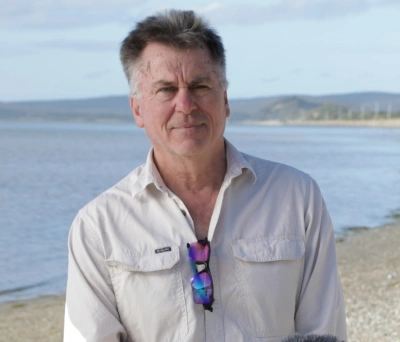
Dr Eric Woehler
There has been a lot of work done by the community in the past to nominate Bruny Island as a UN Biosphere Reserve also, given all its relative qualities compared to so much of the mainland of Tasmania.
The area is relatively... I don't want to say undisturbed, but it has fewer threats on the beaches from a shorebird perspective, compared to many other parts of Tasmania. That's simply because many of the beaches are inside National Parks and/or you can only walk to them, so you can't drive your 4WD onto the beach.

Bruny Island also has large populations of little penguins on many of the beaches. Here at The Neck, there are colonies of little penguins and short-tailed shearwaters that I think most people are familiar with.
There are many other beaches around Bruny Island and Tasmania that support little penguins as well. You have such a mixture of vegetation communities, vegetation habitats and the diversity of landforms, that allow for a high diversity of birds.
It's just one of these magic little treasure islands, where you have intact habitat and the birds reflect the intact nature of the environment here.
Little penguins are only found in Australia and New Zealand, and we believe from the work that has been done over the last 30-40 years, that Tasmania is probably the stronghold for the little penguin as well.

We know they're as far north up the east coast as Sydney. They're certainly in Sydney Harbour and Manly. We have penguins there and they're on the offshore islands in New South Wales.
I think most people would be familiar with the Phillip Island penguin colony. It's deemed as a super-colony. I think they're up to more than 40,000 pairs of penguins nesting on Phillip Island. They go around the corner into South Australia and even into Western Australia, as far north as Perth.
So they're very much along the southern coastline of the Australian continent and all around Tasmania.
They are the world's smallest penguin. They're only about 30 centimetres tall. It's easy for people to disturb the penguins and lose them, but if the penguins choose to nest in your garden or under your shed, that's a particular privilege.

There are people working on penguin surveys up on the north-west coast and we're starting to discover big colonies that we didn't know about before. Or we knew there was a colony, but we didn't have a true sense of the scale of that particular colony or population.
They will nest in a range of habitat. Things like tussock grass, they'll nest under that. They'll nest under coastal wattle, they'll find safe spots inside rocky sea walls, things like that. So they are a generalist and often they will tolerate human occupation.
There are plenty of places where people have penguins nesting under their boat shed, or their dinghy hasn't been turned over for 12 months and when they do they find themselves looking at a pair of penguins who have decided to nest under their overturned dinghy.

They're certainly here on Bruny Island. There's lots of penguins here, but probably the biggest populations are on the Bass Strait Islands and the north-west coast (of Tasmania).
We now know with climate change, with the world's oceans getting warmer, the changes in food distribution and abundance that we're now seeing pretty much breeding almost any time of the year here in Tasmania.
So we have the foundations for a sense of where the penguins are found around Tasmania. We have a sense of the type of habitat they prefer, but they can still continue to surprise us as well in terms of where we find them.

The penguins come ashore of an evening about 45 minutes or so after sunset and depending on the breeding season, they could either have eggs or chicks, or a partner or not in the nest.
When I started working on penguins back in the late 1970s the paradigm was that you would have Spring arrival back to the colonies, breeding during the Summer months, a moult during the Autumn and then they would go to sea for the Winter.
So the only thing that's still fixed is their moult. They have to change their feathers once a year, and that's typically some time around the first week of January now. Summer time, rather than autumn through to April.
So the moult still has to happen, but after that we've had Autumn breeding, we've had Winter breeding, we've had Spring breeding, we've had Summer breeding. The birds are giving us a signal that the marine system is changing - at the moment, it suits them.

But at some point in time, the water temperatures will get too warm and they won't be able to find enough food. At the moment, things are getting better for the penguins. But in time it will cross the threshold and then it will be not such good news.
I wouldn't be here if I didn't believe in the power of education and power of engagement. I think one of the sad things for many people these days is that they've lost their connection with nature.
They spend too much time in front of screens. When kids go out to play, parents say don't touch that, don't get dirty. That's if they go out to play at all. And so for most people their exposure to wildlife is something like a David Attenborough series on TV, rather than actually having the opportunity or having the interest to go out and explore.

You might like...

Canine companion or beach predator?

Bruny Island launch: Dr Tonia Cochran on its global significance

The great Tasmanian bird count

Bruny Island launch: Bob Graham on the hidden world behind the photos
Newsletter
Sign up to keep in touch with articles, updates, events or news from Kuno, your platform for nature
